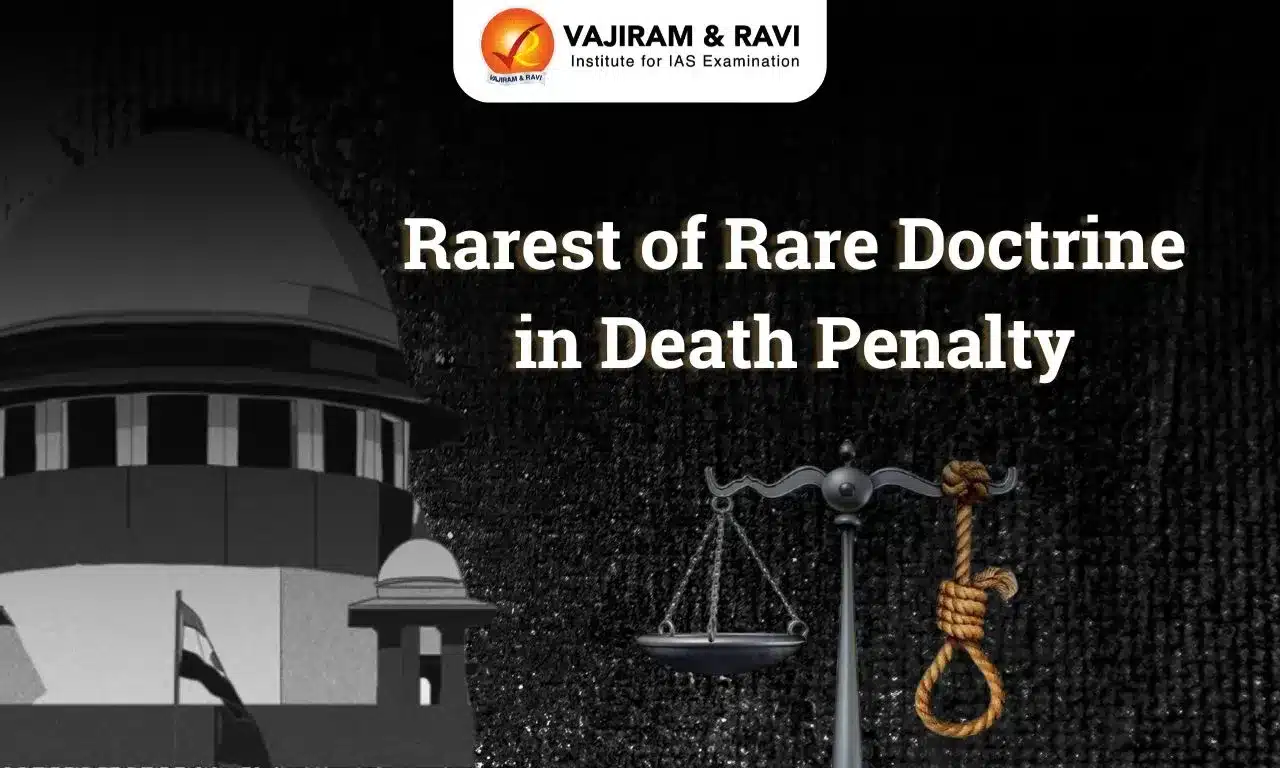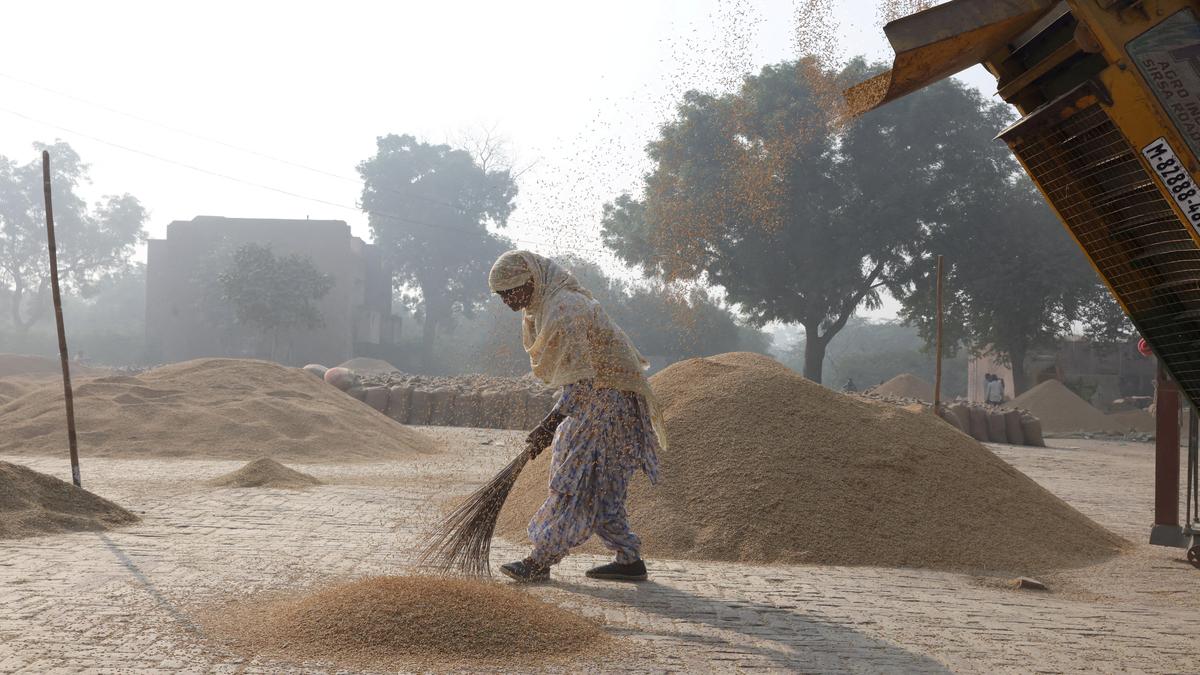What’s in today’s article?
- Why in News?
- RG Kar Rape Case Latest News
- Rarest of Rare Test in Death Penalty
- Aggravating Circumstances in Death Penalty
- Mitigating Circumstances in Death Penalty
- Evolving Understanding of Aggravating and Mitigating Circumstances Post-Bachan Singh
- Stage of Trial Factor in Mitigating and Aggravating Circumstances
- Rarest of Rare Doctrine in Death Penalty FAQs
RG Kar Rape Case Latest News
- Sanjoy Roy, convicted of raping and murdering a doctor at RG Kar Medical College in Kolkata, was sentenced to life imprisonment by a sessions court.
- Despite the CBI’s push for the death penalty and public outcry, the court upheld the Supreme Court’s principle of reserving the death penalty for the “rarest of rare” cases, considering both aggravating and mitigating circumstances as outlined in the Bachan Singh v. State of Punjab (1980) judgment.
Rarest of Rare Test in Death Penalty
- In the 1980 Bachan Singh case, the Supreme Court upheld the death penalty but restricted its imposition to the “rarest of rare” cases, where no possibility of reform exists.
- While it did not provide exact standards, the court outlined lists of aggravating and mitigating circumstances to guide decisions.
Aggravating Circumstances in Death Penalty
- Factors favoring the death penalty include:
- Premeditated and Brutal Acts: Murder that is pre-planned, calculated, and involves extreme brutality.
- Exceptional Depravity: Acts showing extraordinary cruelty.
- Targeting Public Servants: Killing public servants, police officers, or armed forces personnel on duty or due to lawful actions.
Mitigating Circumstances in Death Penalty
- Factors discouraging the death penalty include:
- Mental or Emotional Disturbance: Offender acting under extreme mental or emotional stress.
- Age of the Accused: If the offender is very young or very old.
- Threat to Society: Low likelihood of the offender being a continuing danger.
- Possibility of Reform: Potential for the offender’s rehabilitation.
- Acting Under Influence: Offender was acting on someone else’s directions or had moral justification.
- Mental Impairment: Offender’s inability to understand the criminality of their actions due to mental illness.
Evolving Understanding of Aggravating and Mitigating Circumstances Post-Bachan Singh
- Over time, courts have added new dimensions to aggravating and mitigating factors, refining the application of the “rarest of rare” doctrine.
- Age of the Accused
- Young Age as a Mitigating Factor:
- Cases like Ramnaresh and Ors v. State of Chhattisgarh (2012) and Ramesh v. State of Rajasthan (2011) highlighted that young age (below 30) could indicate reform potential.
- Inconsistent Application:
- The Law Commission’s 262nd Report (2015) noted inconsistent consideration of age.
- In Shankar Kisanrao Khade v. State of Maharashtra (2013), the SC categorized similar cases into groups where age was either emphasized or ignored.
- RG Kar Case: The convict, Sanjoy Roy, is 35 years old, which may weigh against age as a mitigating factor.
- Nature of the Offence
- Need for Comparison:
- Shankar Khade case emphasized comparing the case to similar offences to prevent subjective application of the “rarest of rare” doctrine.
- Shock to Collective Conscience:
- In Machhi Singh v. State of Punjab (1983), the SC held that the death penalty could be imposed if the crime shocks society’s collective conscience.
- However, this approach focuses on the crime’s circumstances, often ignoring the offender’s reform potential.
- Possibility of Reform
- Bachan Singh Principle
- The SC established that the government must prove there is no possibility of reform, with a presumption against the death penalty.
- Objectivity in Sentencing
- In Santosh Bariyar v. State of Maharashtra (2009), the SC underscored the need for clear evidence to demonstrate that the convict is beyond reform, ensuring objectivity in sentencing decisions.
- Law Commission’s Observation
- The 2015 report stressed the importance of evidence to support the claim that reformation is impossible.
- Key Observations
- The evolution of mitigating and aggravating factors has exposed inconsistencies, especially regarding age and the subjective interpretation of “rarest of rare” cases.
- Courts are encouraged to balance the crime’s nature, the offender’s circumstances, and the potential for reform to ensure a just sentencing process.
- Bachan Singh Principle
Stage of Trial Factor in Mitigating and Aggravating Circumstances
- Separate Sentencing Trial
- In Bachan Singh, the SC mandated a separate trial after conviction to allow judges to hear arguments on why the death penalty should not be imposed.
- Timing: The SC has varied in its rulings:
- It can take place on the same day (several rulings).
- It requires a “real, effective, and meaningful hearing” (Dattaraya v. State of Maharashtra, 2020).
- Issues with Same-Day Sentencing
- Lack of Meaningful Hearing
- In Dattaraya case, the absence of a proper sentencing hearing was deemed a valid reason to commute the death sentence to life imprisonment.
- Suo Motu Proceedings (2022)
- The SC questioned whether same-day sentencing meets the standard of meaningful and effective hearings and referred the matter to a larger Bench for creating uniform guidelines.
- Lack of Meaningful Hearing
- Disadvantage to the Convict
- Aggravating vs. Mitigating Circumstances:
- Aggravating factors are part of the case record and readily available to judges.
- Mitigating factors are presented only after conviction, creating an imbalance against the convict.
- Judicial Concern:
- The SC highlighted this imbalance, emphasizing the need for a fairer approach to sentencing.
- Need for Uniform Guidelines
- The SC acknowledged inconsistencies in sentencing hearings and referred the matter to a larger Bench to establish a uniform process for considering mitigating circumstances in death penalty cases.
- Aggravating vs. Mitigating Circumstances:
Rarest of Rare Doctrine in Death Penalty FAQs
Q1.What crimes get the death penalty in India?
Ans. Heinous crimes like murder, terrorism, and offenses against women and children qualify under the “rarest of rare” principle.
Q2.What is a mitigator in the death penalty?
Ans. Mitigators are factors like age, mental health, or reform potential that reduce the likelihood of imposing the death penalty.
Q3. What is the most common crime for the death penalty?
Ans. Murder involving extreme brutality or premeditation is the most common crime attracting the death penalty in India.
Q4.What is the principle of rarest of rare as established in Bachan Singh v. State of Punjab?
Ans. The death penalty should be imposed only when reformation is impossible and the crime shocks society’s conscience.
Q5.What is the difference between aggravating and mitigating circumstances?
Ans. Aggravating factors justify harsher penalties, while mitigating circumstances argue against severe punishment, considering the offender’s situation and potential for reform.
Last updated on January, 2026
→ Check out the latest UPSC Syllabus 2026 here.
→ Join Vajiram & Ravi’s Interview Guidance Programme for expert help to crack your final UPSC stage.
→ UPSC Mains Result 2025 is now out.
→ UPSC Notification 2026 is scheduled to be released on January 14, 2026.
→ UPSC Calendar 2026 has been released.
→ UPSC Prelims 2026 will be conducted on 24th May, 2026 & UPSC Mains 2026 will be conducted on 21st August 2026.
→ The UPSC Selection Process is of 3 stages-Prelims, Mains and Interview.
→ Prepare effectively with Vajiram & Ravi’s UPSC Prelims Test Series 2026 featuring full-length mock tests, detailed solutions, and performance analysis.
→ Enroll in Vajiram & Ravi’s UPSC Mains Test Series 2026 for structured answer writing practice, expert evaluation, and exam-oriented feedback.
→ Join Vajiram & Ravi’s Best UPSC Mentorship Program for personalized guidance, strategy planning, and one-to-one support from experienced mentors.
→ UPSC Result 2024 is released with latest UPSC Marksheet 2024. Check Now!
→ UPSC Toppers List 2024 is released now. Shakti Dubey is UPSC AIR 1 2024 Topper.
→ Also check Best UPSC Coaching in India

















